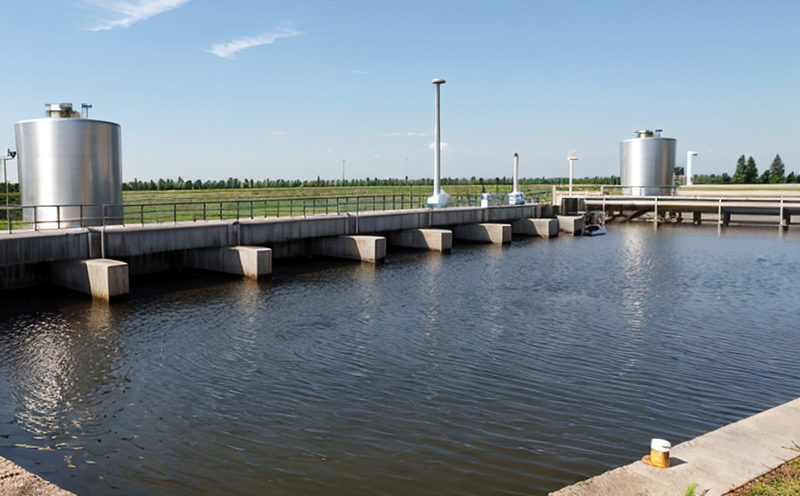EPA Method 1604 Coliform Bacteria Detection in Drinking Water
The Environmental Protection Agency (EPA) method 1604 is widely recognized for its accuracy and reliability in detecting coliform bacteria, particularly Escherichia coli (E. coli), as indicators of fecal contamination in drinking water supplies. This method plays a crucial role in ensuring public health and compliance with regulatory standards.
Coliforms are a group of Gram-negative, rod-shaped, facultatively anaerobic, non-spore-forming, rod-shaped bacteria that include Escherichia coli as well as other members of the Enterobacteriaceae family. Their presence in drinking water can indicate potential contamination from fecal matter, which may harbor pathogens such as Salmonella and Shigella.
EPA Method 1604, officially known as "Detection of Escherichia coli and Coliform Bacteria in Water by Multiple Tube Fermentation," is based on the membrane filtration technique. This method involves filtering a sample through a membrane filter that retains coliform bacteria but allows other constituents to pass through. The retained organisms are then transferred to a series of nutrient broth tubes containing different indicator solutions.
The primary aim of this testing procedure is to differentiate between coliforms and non-coliforms, thereby identifying the presence or absence of E. coli. Following inoculation, incubation periods vary depending on the type of indicator solution used:
- MacConkey Agar: 18-24 hours at 35°C
- Lactose Fermentation Tubes: 18-24 hours at 35°C
- Bile Salt Trypticase Broth: 18-24 hours at 35°C
Upon completion of the incubation period, any growth observed in the lactose fermentation tubes indicates coliform bacteria. Further confirmation is achieved by transferring positive samples to MacConkey Agar plates and examining for the typical pink or red colonies indicative of E. coli.
This method adheres strictly to EPA's official protocol, ensuring consistent and accurate results across laboratories. Compliance with this standard is essential for water utilities required by federal regulations like the Safe Drinking Water Act (SDWA).
Water quality professionals rely on EPA Method 1604 to monitor their systems, ensuring that they meet stringent microbial safety standards set forth by regulatory bodies.
Applied Standards
EPA Method 1604 is specifically designed for the detection of coliform bacteria in drinking water supplies. This method aligns closely with other international standards such as ISO 7892, which provides guidelines for similar procedures used worldwide.
| Standard | Description |
|---|---|
| EPA Method 1604 | Detection of Escherichia coli and coliform bacteria in water by multiple tube fermentation method. |
| ISO 7892 | Water quality - Coliform bacteria - Detection methods. |
| ASTM D1256 | Standard Practice for Sampling and Preservation of Water Samples. |
| EN 10344 | Bacteriological Examination of Drinking-Water. |
The use of EPA Method 1604 ensures that water utilities are in compliance with the stringent requirements set by regulatory bodies, including the SDWA and other local or state regulations. This method is particularly important for utilities responsible for providing safe drinking water to large populations.
Industry Applications
EPA Method 1604 finds extensive application in various sectors where potable water quality must be rigorously monitored and maintained. Key areas include:
- Agricultural Irrigation Water: Ensures that irrigation practices do not introduce harmful microorganisms into the food supply chain.
- Public Drinking Water Systems: Provides assurance of microbial safety for millions of consumers relying on municipal water systems.
- Industrial Process Waters: Guarantees that industrial processes are free from contamination that could lead to product spoilage or health risks.
- Environmental Monitoring: Supports ecological studies and assessments by identifying sources of pollution in natural water bodies.
In each of these applications, the detection of coliform bacteria serves as an early warning system for potential contamination. Early identification allows for timely intervention to prevent further spread of pathogens and ensure public health protection.
Use Cases and Application Examples
EPA Method 1604 is commonly applied in several specific scenarios:
| Scenario | Description |
|---|---|
| Distribution System Surveillance | Regular monitoring of distribution systems to detect any breaches or contamination events. |
| New Source Water Intake Monitoring | Evaluating the microbial quality of raw water before treatment processes begin. |
| On-Site Testing at Remote Locations | Conducting immediate analysis in areas far from central laboratories to ensure rapid identification and response. |
| Emergency Preparedness | Preparation for potential contamination incidents by having reliable detection methods ready. |
| Recreational Water Quality Assessment | Evaluating the microbial safety of water used in swimming pools, lakes, and other recreational areas. |
| Water Treatment Plant Operation | Continual assessment during treatment to ensure effective removal of coliform bacteria. |
In these use cases, the method's ability to provide rapid and accurate results is crucial. For example, in distribution system surveillance, quick identification of contamination helps utilities implement immediate corrective actions, minimizing health risks for consumers.





